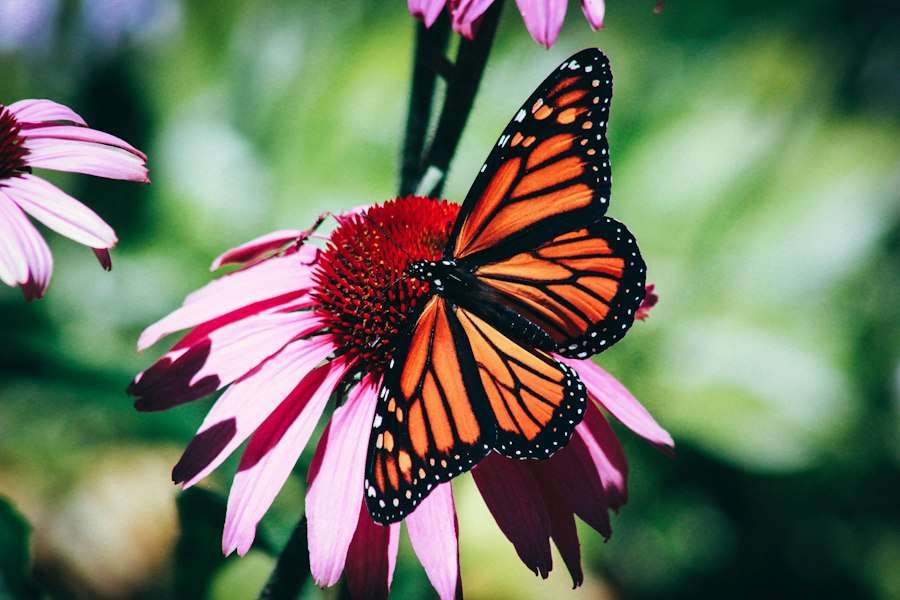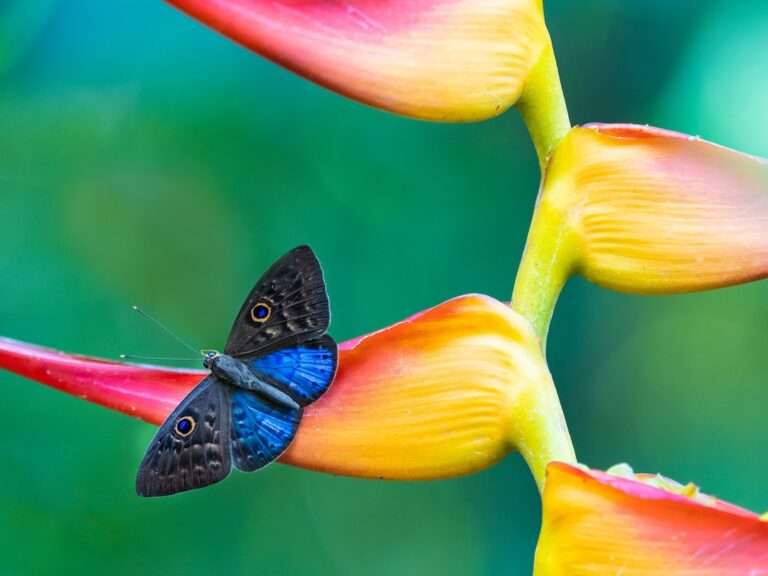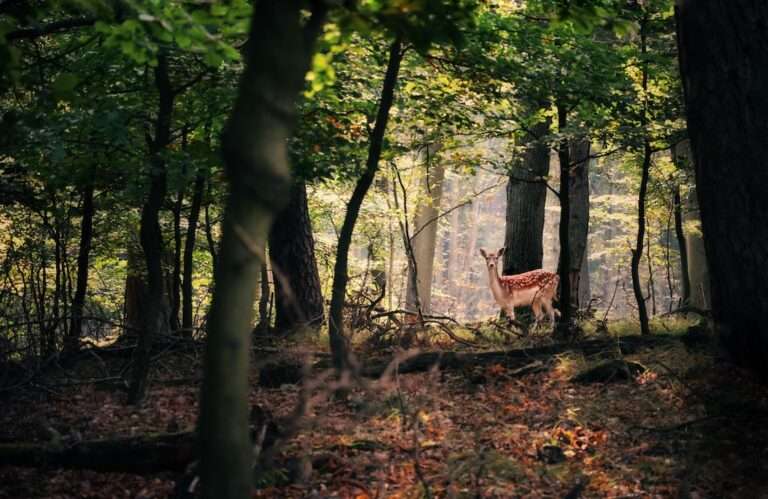The Magnificent Metamorphosis: Exploring the Symbolism of Butterflies

Butterflies are one of the most enchanting creatures in the natural world. With their vibrant colors and delicate wings, they captivate our attention and inspire a sense of wonder. But butterflies are more than just beautiful insects; they play a crucial role in nature and have deep cultural significance in many societies around the world.
In nature, butterflies are important pollinators, helping to fertilize plants and ensure their survival. They also serve as indicators of a healthy ecosystem, as their presence or absence can indicate the overall health of an environment. In addition to their ecological importance, butterflies have long been revered in various cultures and religions for their symbolism of transformation, beauty, and spiritual growth.
Key Takeaways
- Butterflies undergo a remarkable transformation from caterpillar to chrysalis to butterfly.
- Butterflies hold symbolic meaning in various cultures and religions around the world.
- The metamorphosis of butterflies is scientifically explained through cellular and hormonal changes.
- Butterflies play a crucial role in pollination and maintaining healthy ecosystems.
- There are countless species of butterflies with unique and beautiful characteristics found worldwide.
The Journey of a Butterfly: From Caterpillar to Chrysalis to Butterfly
The life cycle of a butterfly is a remarkable process that involves several distinct stages. It begins with the egg, which is laid by an adult butterfly on a host plant. From the egg hatches a caterpillar, also known as a larva. The caterpillar spends its time eating and growing, shedding its skin several times as it goes through different instars.
After reaching its full size, the caterpillar forms a chrysalis or pupa, where it undergoes a process called metamorphosis. Inside the chrysalis, the caterpillar’s body breaks down and reforms into a completely different creature – a butterfly. This transformation takes place over the course of several weeks, and when it is complete, the adult butterfly emerges from the chrysalis.
Each stage of the butterfly’s journey is fascinating in its own right. For example, did you know that caterpillars have up to 4,000 muscles in their bodies? This allows them to move and manipulate their environment with great precision. And when it comes to the chrysalis stage, some species of butterflies can change color or even become transparent, allowing us to see the intricate details of their transformation.
The Symbolism of Butterflies in Different Cultures and Religions
Butterflies have long been associated with symbolism in various cultures and religions around the world. In ancient Greece, they were seen as the embodiment of the soul, representing the journey from life to death and rebirth. In Chinese culture, butterflies are a symbol of love and joy, often depicted in art and literature as a sign of marital bliss.
In Native American cultures, butterflies are seen as messengers from the spirit world, carrying messages from ancestors or guiding souls to the afterlife. In Hinduism, butterflies are associated with the goddess Saraswati, who is the embodiment of knowledge, creativity, and wisdom.
The symbolism behind butterflies is often tied to their transformation from a lowly caterpillar to a beautiful butterfly. They represent personal growth, change, and the ability to overcome obstacles. The butterfly’s ability to fly also symbolizes freedom and liberation.
The Scientific Explanation Behind the Metamorphosis of Butterflies
| Stage of Metamorphosis | Description |
|---|---|
| Egg | The first stage of a butterfly’s life cycle. The egg is usually laid on a leaf and is very small, about the size of a pinhead. |
| Larva | The second stage of a butterfly’s life cycle. The larva, also known as a caterpillar, hatches from the egg and spends most of its time eating and growing. |
| Pupa | The third stage of a butterfly’s life cycle. The pupa, also known as a chrysalis, is a protective casing that the caterpillar creates around itself before it transforms into a butterfly. |
| Adult | The final stage of a butterfly’s life cycle. The adult butterfly emerges from the pupa and is fully formed. It will spend the rest of its life searching for a mate and laying eggs to start the cycle all over again. |
| Metamorphosis | The process by which a caterpillar transforms into a butterfly. During metamorphosis, the caterpillar’s body breaks down and reorganizes into the body of a butterfly. |
| Scientific Explanation | The metamorphosis of butterflies is controlled by hormones. When the caterpillar is ready to transform into a butterfly, it releases a hormone that triggers the formation of the pupa. Inside the pupa, the caterpillar’s body breaks down and reorganizes into the body of a butterfly. This process is controlled by a different set of hormones. Once the butterfly emerges from the pupa, it is fully formed and ready to begin its adult life. |
The metamorphosis of butterflies is a complex biological process that involves several stages of development. It begins with the egg, which contains all the genetic information needed to form a butterfly. Inside the egg, the embryo develops and eventually hatches into a caterpillar.
The caterpillar goes through several instars, or stages of growth, shedding its skin each time it outgrows its current exoskeleton. During this time, it feeds voraciously on leaves and other plant material to fuel its rapid growth.
Once the caterpillar reaches its full size, it forms a chrysalis or pupa. Inside the chrysalis, the caterpillar’s body undergoes a process called histolysis, where its tissues break down into a soupy substance. This substance then reorganizes itself into the adult butterfly, complete with wings, antennae, and other adult structures.
The transformation from caterpillar to butterfly is controlled by hormones and genetic factors. The process is still not fully understood by scientists, but it is believed to involve the activation and deactivation of certain genes that control the development of different body parts.
The Role of Butterflies in Pollination and Ecosystems
Butterflies are important pollinators, playing a crucial role in the reproduction of many plant species. As they feed on nectar from flowers, they inadvertently pick up pollen on their bodies and transfer it to other flowers as they move from one plant to another. This helps to fertilize the flowers and ensure the production of seeds and fruits.
In addition to their role in pollination, butterflies also serve as indicators of a healthy ecosystem. Their presence or absence can provide valuable information about the overall health of an environment. For example, if butterfly populations decline, it may be a sign that there are problems with habitat loss, pollution, or climate change.
Butterflies are also an important food source for other animals, such as birds and bats. They provide a vital link in the food chain, helping to maintain the balance of ecosystems.
The Beauty and Diversity of Butterfly Species Around the World

There are thousands of species of butterflies found all over the world, each with its own unique characteristics and adaptations. From the vibrant colors of the tropical butterflies to the subtle patterns of those found in temperate regions, there is a wide range of beauty to be found in these creatures.
One example of a stunning butterfly species is the Blue Morpho butterfly, found in Central and South America. It is known for its iridescent blue wings, which appear to change color depending on the angle of light. Another example is the Monarch butterfly, famous for its long-distance migration from North America to Mexico.
Butterflies also come in a variety of sizes, from the tiny Pygmy Blue butterfly, which has a wingspan of less than an inch, to the Atlas Moth, which has a wingspan of up to 12 inches. Some species have intricate patterns on their wings, while others have transparent or translucent wings.
The Importance of Butterfly Conservation and Protection
Butterflies are facing numerous threats to their populations, including habitat loss, climate change, pollution, and the use of pesticides. As their habitats are destroyed or altered, butterflies are losing the plants they rely on for food and shelter. Climate change is also affecting their migration patterns and breeding cycles.
Conservation efforts are crucial to protect butterflies and ensure their survival. This includes preserving and restoring their habitats, planting native plants that provide food for caterpillars and nectar for adult butterflies, and reducing the use of pesticides.
Butterfly gardens and butterfly houses are also important tools for education and conservation. These spaces provide a safe haven for butterflies and allow people to learn about their life cycle and importance in nature.
The Connection Between Butterflies and Transformation in Personal Growth
The symbolism of butterflies extends beyond nature and culture; it also holds deep meaning in personal growth and transformation. The journey of a butterfly from caterpillar to chrysalis to butterfly mirrors the process of personal growth and transformation that many people go through in their lives.
Butterflies represent the ability to overcome obstacles and emerge stronger and more beautiful on the other side. They remind us that change is a natural part of life and that we have the power to transform ourselves.
Many people use butterfly imagery in personal growth practices, such as meditation or visualization exercises. They may imagine themselves as a caterpillar, shedding old beliefs or behaviors that no longer serve them, and then transforming into a butterfly, ready to spread their wings and embrace new possibilities.
The Cultural Significance of Butterfly Imagery in Art and Literature
Butterflies have long been a source of inspiration for artists and writers. In art, they are often depicted as symbols of beauty, grace, and transformation. They are also associated with femininity and the divine feminine energy.
In literature, butterflies are often used as metaphors for transformation or the fleeting nature of life. They can represent the ephemeral nature of beauty or the fragility of existence. For example, in Vladimir Nabokov’s novel “Lolita,” the protagonist compares his love interest to a butterfly, emphasizing her delicate and elusive nature.
Butterfly imagery is also used in various forms of visual art, such as paintings, sculptures, and jewelry. These pieces often capture the intricate patterns and vibrant colors of butterflies, celebrating their beauty and symbolism.
The Spiritual Meaning of Butterflies in Dream Interpretation
Dreams about butterflies can hold deep spiritual meaning and symbolism. In many cultures, butterflies are seen as messengers from the spirit world or symbols of transformation and spiritual growth.
Dreaming about butterflies can represent a period of personal growth or a transition in your life. It may indicate that you are going through a process of transformation or that you are ready to embrace new opportunities.
The interpretation of butterfly dreams can vary depending on the context and details of the dream. For example, dreaming about a butterfly flying freely may symbolize freedom and liberation, while dreaming about a butterfly trapped in a cage may represent feelings of being trapped or restricted.
The Fascinating Adaptations and Behaviors of Butterflies in the Wild
Butterflies have evolved a variety of adaptations and behaviors that allow them to survive and thrive in their environments. One example is their ability to camouflage themselves to blend in with their surroundings, making it difficult for predators to spot them.
Some species of butterflies also have unique defense mechanisms to protect themselves from predators. For example, the Pipevine Swallowtail butterfly has bright orange and black wings that mimic the toxic Pipevine plant, deterring predators from attacking them.
Butterflies also have fascinating behaviors, such as migration. The Monarch butterfly, for example, undertakes a long-distance migration from North America to Mexico, covering thousands of miles. This incredible journey is still not fully understood by scientists, but it is believed to be guided by a combination of genetic factors and environmental cues.
Butterflies are not just beautiful creatures; they are an integral part of nature and culture. Their role in pollination and maintaining healthy ecosystems cannot be overstated. They also hold deep cultural and spiritual significance in many societies around the world.
It is important that we take action to protect and conserve butterflies and their habitats. By preserving their habitats, planting native plants, and reducing the use of pesticides, we can ensure that these enchanting creatures continue to grace our world for generations to come.
If you’re fascinated by the symbolism of butterflies, you might also be interested in exploring the symbolism of the moon. The moon has long been associated with various meanings and interpretations across different cultures and belief systems. From its connection to femininity and intuition to its representation of cycles and transformation, the moon holds a powerful symbolic significance. To delve deeper into this topic, check out this insightful article on the symbolism of the moon at Symbolism Hub.
FAQs
What is butterfly symbolism?
Butterfly symbolism refers to the use of butterflies as a symbol in various cultures and contexts. It is often associated with transformation, rebirth, and the beauty of nature.
What do butterflies symbolize in different cultures?
In many cultures, butterflies are seen as a symbol of transformation and rebirth. In Chinese culture, they represent love and joy. In Native American culture, they are seen as a symbol of change and transformation. In Greek mythology, butterflies are associated with the soul and the concept of immortality.
What is the spiritual meaning of butterflies?
The spiritual meaning of butterflies is often associated with transformation and growth. They are seen as a symbol of the soul’s journey and the process of spiritual awakening. Butterflies are also believed to represent the beauty and wonder of the natural world.
What is the significance of butterfly colors?
The colors of butterflies can have different meanings depending on the culture and context. In general, bright and vibrant colors are associated with joy, happiness, and positivity. Darker colors may be associated with mystery, transformation, and the unknown.
What is the symbolism of a butterfly landing on you?
In many cultures, a butterfly landing on you is seen as a sign of good luck and positive energy. It may also be interpreted as a message from the spirit world or a sign of spiritual growth and transformation.
What is the butterfly effect?
The butterfly effect is a concept in chaos theory that suggests that small changes in one part of a system can have large and unpredictable effects on the system as a whole. The term was coined by mathematician and meteorologist Edward Lorenz in the 1960s.





